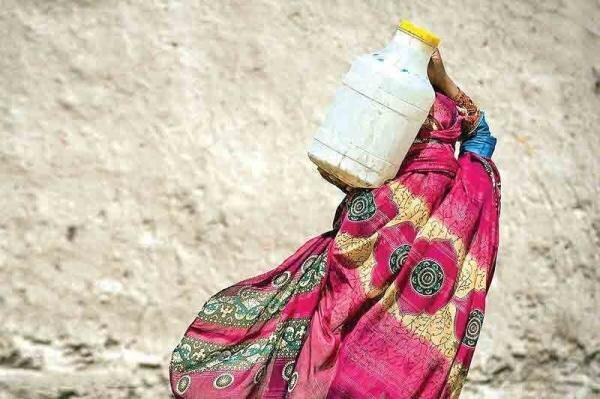IFRC launches emergency plan to counter drought in Iran

TEHRAN – The International Federation of Red Cross and Red Crescent Societies (IFRC) has launched an emergency appeal to support the Iranian Red Crescent Society (IRCS) in response to drought in the country.
Iran faces a range of environmental challenges from high temperatures, pollution, flooding, and vanishing lakes. In April 2021, the Iranian Meteorological Organization warned of an "unprecedented drought" and rainfall levels that were substantially below long-term averages.
This Emergency Appeal will target 800,000 people in the seven most affected provinces, namely South Khorasan, Kerman, Sistan-Baluchestan, Hormozgan, Khuzestan, Isfahan, Khorasan Razavi, among which, three provinces share a border with Afghanistan.
The plan estimates the funding requirements as CHF 9 million.
The IRCS estimates that 4.8 million people are at medium to high risk of drought-related impacts. Assistance will be provided through emergency support in the form of unconditional cash, as well as programs to provide training, materials, and expertise in adapting livelihoods and ensuring those who remain in agriculture and animal husbandry are more resilient to the prevailing climatic conditions.
With respect to health, alongside support through mobile medical teams that reach remote locations to treat and refer patients suffering from sand/dust-induced ailments, the IRCS will engage in psychosocial support to address the feelings of despair and abandonment that losing livelihoods and migration engender.
In WASH, the focus will be on identifying the most vulnerable and assisting in emergency provisions – a continuation and beefing up of the respected IRCS water donation program – but also working with partners in the Ministry of Energy to roll out training and capacity to allow the population, agriculturalists and those engaged in animal husbandry to make more informed choices about their water usage.
4.8 million people at medium to high risk of drought
The amount of rainfall in Iran's main river basins from September 2020 to July 2021 was, in most places, substantially lower compared with the year-earlier period. Iran experiences frequent droughts and faces the prospect of more extreme conditions brought about by climate change.
According to current assessments, parts of Iran are facing a rainfall anomaly which has had an observed impact on vegetation and agriculture. Of particular concern is that these drought impacts have been observed in northeastern Iran in areas bordering Afghanistan.
The IRCS estimates that 4.8 million people are at medium to high risk of drought-related impacts, mostly in remote and rural areas of the provinces.
It reports that 29 of 31 provinces, and especially seven – South Khorasan, Kerman, Sistan-Baluchestan, Hormozgan, Khuzestan, Isfahan, Khorasan Razavi – have been severely affected by the drought. The lack of safe and sufficient water supply for drinking, hygiene, agriculture, animal husbandry, and electrical power is having a devastating and increasingly unsustainable strain on households’ health, income in addition to encouraging negative social trends and coping mechanisms.
The IRCS started its drought response in July 2021 through the support of the IFRC’s Disaster Relief Emergency Fund (DREF) with CHF 750,000. This is to support the initial response efforts of IRCS in preventing further deterioration of water insecurity and related health and livelihood issues for households and communities in four provinces until February 2022.
Severity of humanitarian conditions
The IRCS estimates that 4.8 million people are at medium to high risk of drought-related impacts, mostly in remote and rural areas of the provinces.
The drought has brought widespread reliance on water trucking and bottled water for drinking. Many individuals or households have moved from rural to urban areas, resulting in the abandonment of villages in rural areas and the worsening of living conditions in urban areas. People are facing increasingly limited income-generating activities, rising staple food prices, and for those fortunate to have formal accommodation, higher land, and property rents.
The IRCS reports the drought has exacerbated the existing vulnerabilities and social marginalization of women. Drought places additional burdens on women in terms of their responsibilities around household care. Moreover, the migration of predominantly young men distorts the gender balance in the urban centers. There are accounts of this leading to gender-based violence as frustration and despair increase, as well as impacts on the prospects for marriage and natality.
Children are particularly vulnerable, with increased risks to their health, such as skin and eye diseases, cognitive development, in addition to respiratory problems associated with the drought. Mothers, predominantly living in remote villages, regularly tell IRCS volunteers of their children’s ailments and what afflicts other family members, while the IRCS estimates that there has been a threefold increase in recent years in vulnerable children, directly attributable to the airborne dust and lack of access to water for hygiene purposes.
FB/MG
Leave a Comment